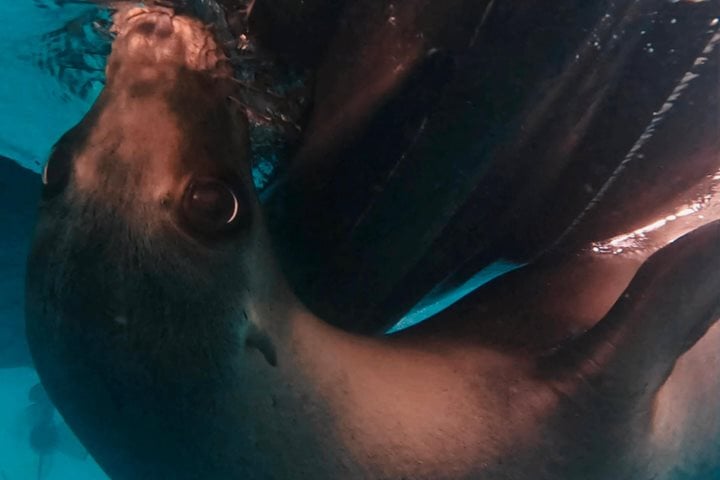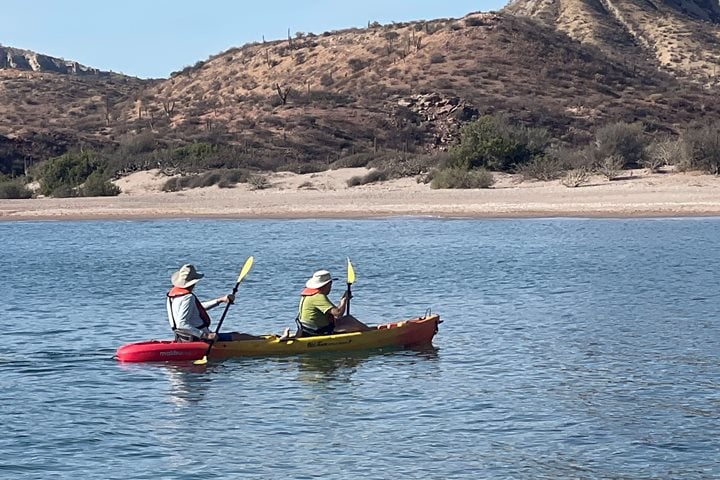From our anchorage just off Isla Rasa this morning, early risers were greeted with a stunning sunrise accompanied by the sounds of 1000’s of birds filling the air. This flat island may be small, but Isla Rasa is an important one in the lives of 100,000’s of terns and gulls. Both elegant and royal terns, as well as Heermann’s gulls use this island as a breeding area year after year. In recent seasons, due to various pressures that have caused decreases in the birds’ food sources, there have not been as many birds on the island. While today there were still not as many birds as have historically been on the island, we were happy to see that many had returned for this season.
During morning rides in small boats, we explored the rocky shoreline. Gulls lined the rocks of most of the island, with an occasional cormorant, pelican, heron, or egret among them. Terns were densely congregated on a point and occasionally took flight en masse over the still silvery water…quite a sight to behold!
For the afternoon, we disembarked in the small town of Bahia de Los Angeles and traveled inland to walk among some of the typical plants of the Sonoran Desert. The main attraction for this outing was the boojum tree, a plant that is as unique looking as its name would imply. Among cholla, galloping, and cardón cacti, boojum trees twist, fork, and turn, easily distinguished from their neighbors as they rose above the surrounding vegetation. The area was largely a landscape of brownish-reds and drab greens from the rocks and plants, but once we looked closer, we saw that the desert was in bloom. Many cholla cacti had small reddish and yellow blossoms while the tips of whip-like ocotillos displayed scarlet flowers. As we spread out over the area, we were able to each spend time wandering among the towering vegetation, either with friends or on our own, and experience the beautiful and fierce landscapes of this desert first-hand before heading back to the comforts of the National Geographic Sea Lion for dinner.







